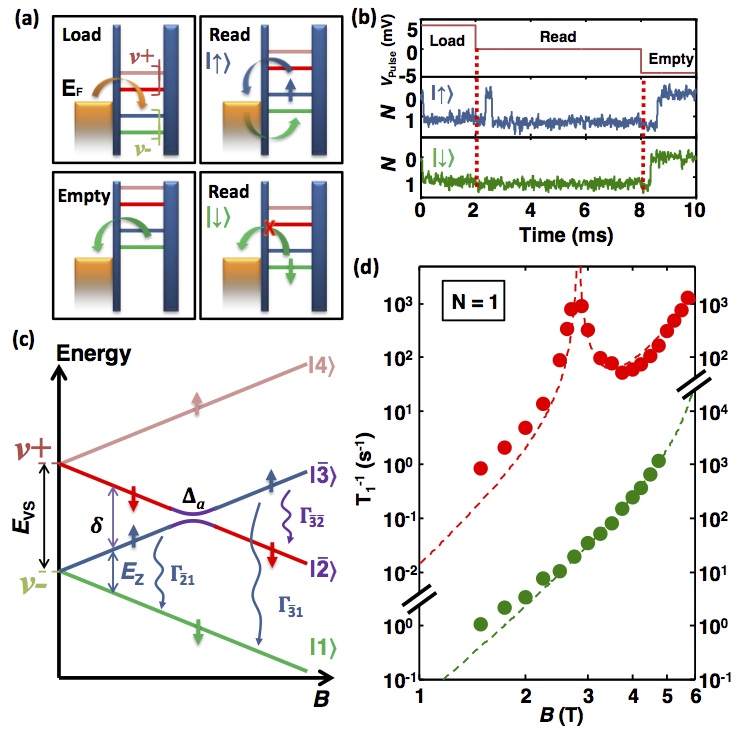Whilst silicon is a promising material for quantum computation, the degeneracy of the conduction band minima (valleys) must be lifted with a splitting sufficient to ensure formation of well-defined and long-lived spin qubits. Here we demonstrate that valley separation can be accurately tuned via electrostatic gate control in a metal-oxide-semiconductor quantum dot, providing splittings spanning 0.3 – 0.8 meV. The splitting varies linearly with applied electric field, with a ratio in agreement with atomistic tight-binding predictions. We demonstrate single-shot spin readout and measure the spin relaxation for different valley configurations and dot occupancies, finding one-electron lifetimes exceeding 2 seconds. Spin relaxation occurs via phonon emission due to spin-orbit coupling between the valley states, a process not previously anticipated for silicon quantum dots. An analytical theory describes the magnetic field dependence of the relaxation rate, including the presence of a dramatic rate enhancement (or hot-spot) when Zeeman and valley splittings coincide.
Preprint: Spin-valley lifetimes in a silicon quantum dot with tunable valley splitting
February 6th, 2013 | Published in All, News, Preprints
C. H. Yang, A. Rossi, R. Ruskov, N. S. Lai, F. A. Mohiyaddin, S. Lee, C. Tahan, G. Klimeck, A. Morello, A. S. Dzurak
(Submitted on 5 Feb 2013)
